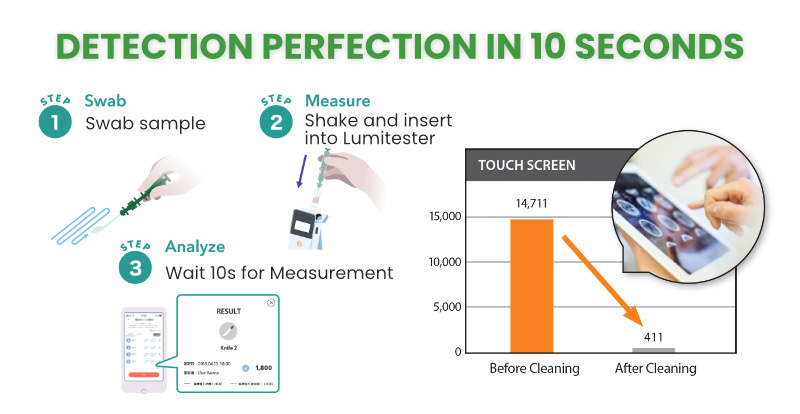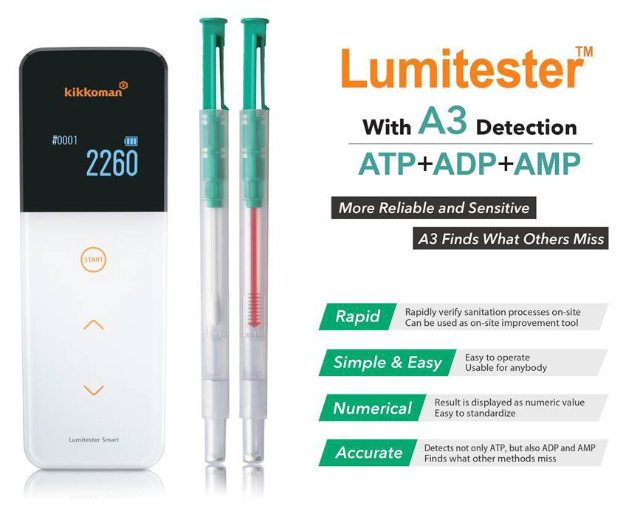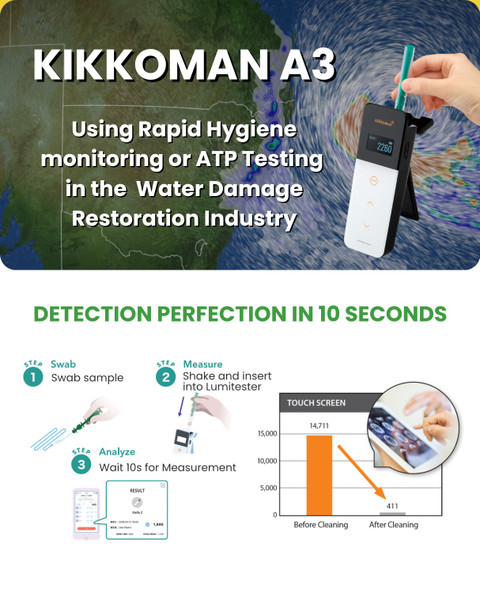ATP Testing in Water Damage Restoration
Flooding has hit Queensland and New South Wales. Properties in the north are underwater, and Cyclone Alfred still affects the south. The immediate crisis may be over, but long-term challenges are just starting. Many water-damaged properties now face secondary issues like mould growth, bacterial contamination, and poor indoor air quality.
For restoration professionals, proving the effectiveness of your cleaning and sanitation processes is more critical than ever. Rapid hygiene monitoring, also known as ATP (Adenosine Triphosphate) testing, is a quick and reliable method. It checks how clean surfaces are, records your cleaning efforts, and gives clients confidence in the restoration process.
What is ATP Testing & Why is it Important in Restoration?
ATP is a molecule that provides energy and is present in every living organism, such as animals, plants, and microorganisms. Detecting ATP on surfaces signals inadequate cleaning and contamination, indicating organic debris and bacterial presence.
The ATP test utilises the firefly luciferase reaction, which generates light from the interaction between luciferin and ATP. The light produced depends on the amount of ATP in a sample.
You can measure this light with a luminometer. The luminometer provides results in relative light units (RLU) in just a few seconds.
This test involves three fundamental steps:
- (i) use the swab attached to a pen-like tool to collect a sample from the surface,
- (ii) return the swab to the main body of the device and mix it with reagents, and
- (iii) place the device into a luminometer and press the button to initiate the measurement.
A result exceeding a pre-determined pass-fail threshold suggests the surface is not clean.When surfaces remain contaminated after water damage, ATP testing can reveal the presence of organic material, indicating potential microbial growth. Traditional ATP testing kits only measure ATP, but the Kikkoman Lumitester Smart with A3 technology detects ATP, ADP (Adenosine Diphosphate), and AMP (Adenosine Monophosphate)—providing a more comprehensive and accurate assessment of cleanliness.
For restoration professionals, this technology offers several key advantages:
- Verifies the effectiveness of sanitation and disinfection before and after cleaning.
- Provides scientific data to support your cleaning claims and validate your restoration process.
- Reduces liability risks by demonstrating due diligence in decontamination.
- Enhances documentation and reporting for insurance claims and compliance purposes.
Using ATP Testing in Water Damage Restoration
In a water damaged property, ATP testing can be applied throughout the restoration process to confirm hygiene standards and ensure contaminants have been properly removed. Here’s how:
- Pre-Cleaning Testing
- Conduct ATP tests on affected surfaces to establish baseline contamination levels.
- Identify high-risk areas requiring additional attention.
- During the Cleaning Process
- Test surfaces at different stages of cleaning to verify progressive contamination reduction.
- Adjust cleaning methods as needed based on real-time data.
- Post-Cleaning Verification
- Perform final ATP tests to confirm surfaces meet sanitation standards.
- Include ATP test results in reports for clients and insurance adjusters.
If you need third-party validation for post-remediation verification, following these steps will help you pass. This can save you time and money on re-testing.

Why Choose Kikkoman A3 Over Traditional ATP Testing?
The Kikkoman Lumitester Smart outperforms many standard ATP testers by providing:
- Broader detection capabilities – Measures ATP, ADP, and AMP for more accurate results.
- Rapid results – Get contamination levels in 10 seconds, allowing for quick decision-making.
- Cloud-based reporting – Store, track, and analyse test data via the Lumitester Smart app.
- Portable design – Lightweight and easy to carry between job sites.

Incorporating ATP Testing into Your Restoration Business
With ATP testing, restoration professionals can elevate their service quality and provide data-driven assurance to property owners and insurers. Key applications include:
- Moisture and mould remediation – Confirm contaminated surfaces have been properly cleaned.
- Post-flood sanitation – Validate disinfection of floors, walls, and HVAC systems.
- Insurance documentation – Provide ATP test results as evidence of completed remediation.
As flood recovery efforts continue across Queensland and New South Wales, the need for thorough, verifiable cleaning has never been greater. Using Kikkoman A3 ATP testing as part of your restoration process not only enhances your remediation efforts but also strengthens your credibility in the industry.
Recent Posts
-
The Ultimate Battery Operated Power Scrubber for Restoration Professionals
Less Elbow Grease, More Results: Meet the Battery-Powered Scrubber That Does the Hard Work for You S …17th Nov 2025 -
Choosing the Right Cleaning Chemicals in Restoration: Work Smarter, Work Safer
Chemical safety isn’t an optional extra in restoration — it’s the foundation of professional, consis …9th Nov 2025 -
Raising the Bar in Hygiene Testing: Inside the Science of the Kikkoman A3 Lumitester
When it comes to restoring water or fire-damaged buildings, cleaning isn’t just about appearances. I …24th Oct 2025




